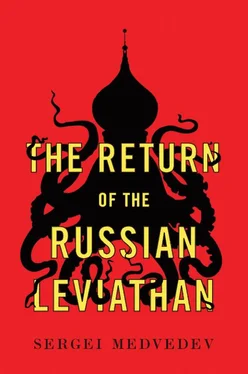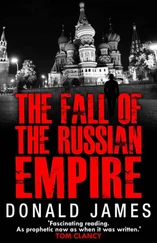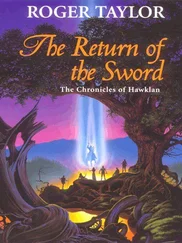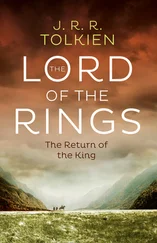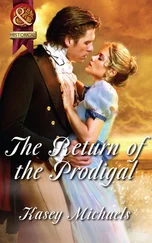Over the course of the hundred years since the Revolution of 1917, Russia has tried to create a modern society, built on the principles of solidarity, egalitarianism and the social contract (although in many ways these were merely declared aims, while in the USSR the privilege of status ruled supreme). But since the start of the twenty-first century there has been a landslide of the demodernization of power, society, the economy and the mass consciousness. As a result, Russia is rolling back from modern bureaucracy and from the oligarchic state of the times of early capitalism to feudalist, aristocratic rule, to the appearance of the class of the service nobility, as in the time of the godfather of Russian statehood, Ivan the Terrible. And Igor Shuvalov, with his carefully constructed aristocratic ways, sets a political fashion, albeit in a British way – from the royal Corgis to a house on Whitehall.
If we continue this trend down the staircase of history, we should then pass from the age of the service nobility to patrimonial nobility. It was no coincidence that in 2012 the political scientist, Yevgeny Minchenko, declared the second decade of this century as the ‘dynastic stage’ of the evolution of the system, in which the ruling elite develops the desire to create a hereditary aristocracy, so that they can transfer by inheritance property they have acquired. Only the right of patrimonial nobility could give the elite the guarantees they seek against the next redistribution of property (which will be inevitable when power changes hands again in Russia), and ensure stability and continuity in an era of wars, terrorism and sanctions.
To achieve this, new laws will be needed: hereditary titles and rights; a special judicial status for the new nobility; immunity from justice; guarantees of the inviolability of their private life and their property; classifying information about the aristocracy in registers. It seems that special status will be essential for the animals of the lords and masters, too – just like in the Middle Ages, when a peasant who raised his hand against the master’s dog was sentenced to death. And if a hundred years ago the poet Sergei Yesenin could write a touching message to the dog of Vasily Kachalov, a legendary actor of the Theatre of the Arts, then the poets of the new age could compose an ode to Igor Shuvalov’s dogs. After all, they are a symbol and a role model for modern Russia.
Moscow, the end of April, late in the evening. At midnight the police have shut off the Garden Ring Road: there’s a rehearsal taking place for the Victory Day Parade on 9 May. There’s electricity in the damp April air: a crowd is standing on the roadside; the police cars are stationary, blue lights flashing. From a long way off comes a deep rumbling sound. A few open military vehicles go past; and then, there IT is: the pride and joy of the Russian lands, the symbol of the might of the state and the jewel in the crown of the Strategic Rocket Forces – the twenty-five-metre long Topol-M missile. Bringing up the rear, at a respectful distance, is a column of BTR armoured personnel carriers. The ground shakes, the windows rattle, and the social networks are abuzz: everyone is excitedly snapping away, tweeting, posting and sending photos of the missile on Instagram. The only thing lacking is the battle cry, like that of the last Red Indians, as they carry this war axe.
Watching these primitive rituals in paying homage to the missile, I thought about the nature of Russian sovereignty, about the collective unconsciousness and the sanctification of strength. The missile is immanent and attached to Russia as part of the state’s armaments, built into the Russian landscape. It even led to a recent scandal with an advertising poster for Aeroflot in the Brussels metro. The poster carried an aerial shot of the Kremlin; but when you looked closely you could see that on the Kremlin Embankment there was a column of Topol missiles. Alarmed locals tried to work out the hidden message behind the poster; some even took it as a thinly disguised threat from Moscow to the European Union. What had most likely happened, however, was that the designer had been searching for a photograph of the capital at its best. This one seemed the most appropriate, and having military hardware on display was an appropriate symbol of the holiday mood, adding a certain national piquancy. The idea that just one five-hundred-kiloton warhead of this piquancy could wipe out the whole of Brussels never even occurred to the designer.
Missiles are a vital part of our mentality: ‘But we build missiles’, as Yuri Vizbor sang in a humorous song in answer to a foreigner’s criticism of the Soviet Union. [10] https://texty-pesen.ru/zato-my-delaem-rakety.html . Yuri Vizbor, ‘But we build missiles’, words and music (in Russian).
The missile is the carrier of the Russian myth, from the theorist of interplanetary travel, Konstantin Tsiolkovsky, to the constructor of the first space rocket, Sergei Korolev; from the jet-propelled ‘Katyusha’ rockets of the Second World War to the submarine-launched intercontinental ballistic missile, Bulava. The missile is the child of the limitless Russian space, and it is also the state’s answer to the challenge of this space: a huge phallic symbol of might, in contrast to the horizontal and amorphous flat plain. The missile is the Russian dream; it compensates for the imperfections of life on earth by producing a reckless flight and the wide smile of the first cosmonaut, Yury Gagarin.
At the start of the twenty-first century, when Western countries consider parades of military hardware as an exotic anachronism, we remain one of those ambitious developing countries which still hold them. Columns of heavy technology rolling across Red Square – causing the icons to shake in St Basil’s Cathedral, the tea cups to tinkle in the shops in GUM, and the bones to quake of Stalin in the Kremlin Wall and of the holy mummy of Lenin in the Mausoleum – put us on a par with India and Pakistan, with the oil monarchies of the Arab world, and with unbending North Korea, which, full of bluff and blackmail, from time to time shows the world its Taepodong ballistic missile. All these countries are united by a patriarchal picture of the world, which is seen through the prism of fear and strength. Instead of holding parades of inventors and Nobel laureates, of GPs and school teachers (who, according to Bismarck, were the ones who won the Franco-Prussian War), we choose to roll out our huge missile as our final and main argument.
For eighteen years, from 1990 until 2008, Russia lived without demonstrations of military hardware in the capital; tanks appeared on the streets only at the time of the coup in August 1991 and the street battles in October 1993. [11] In August 1991, hard-liners in the Communist leadership tried to seize power to prevent the President, Mikhail Gorbachev, from signing an agreement with the constituent republics of the USSR, which, they believed, would lead to the break-up of the country. Their so-called coup lasted less than three days and had the effect of speeding up the process of the disintegration of the Soviet Union. In 1993, there was a stand-off between the Russian President, Boris Yeltsin, and his opponents in Parliament. After fighting on the streets of Moscow had left dozens dead, Yeltsin took the decision to send in the tanks and bombard the Parliament building, where his opponents had barricaded themselves in.
Vladimir Putin brought the ‘heavy parades’ back to Moscow alongside other traditional attributes of sovereignty just as the curtain was coming down on his second presidential term at the start of 2008. Just three months after the Victory Parade on Red Square, Russian tanks were flattening South Ossetia during the war with Georgia – the first time for many years that Russia had carried out a military operation outside its borders. Of course, these were different tanks; but such a demonstration of strength is sooner or later put into practice.
Читать дальше
